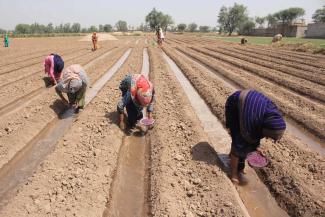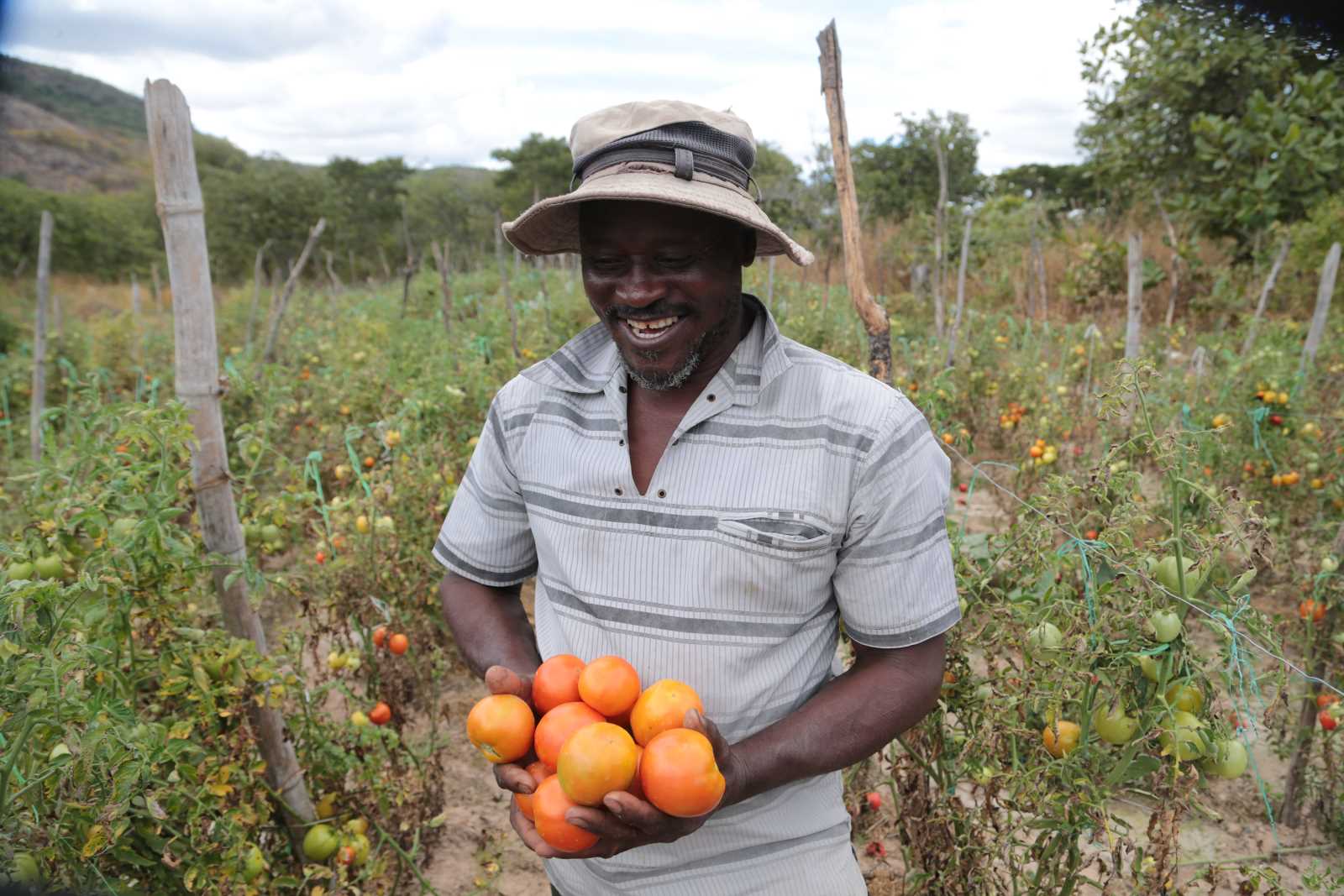Agriculture
How the climate crisis affects cotton production in Pakistan

More than two thirds of Pakistan’s people depend on agriculture. According to the governmental Pakistan Economic Survey for the financial year 2020/21, farming accounts for 19.2 % of gross domestic product (GDP). Cotton is relevant both for agriculture and the garments industry. This commodity is declared to account for about 0.6 % of GDP.
In the past 10 years, however, cotton production has almost halved, as the Pakistan Bureau of Statistics (PBS) has reported, from 13.6 million bales in 2011/12 to about 7 million in 2020/21. In this period, the land used for cotton cultivation was reduced from about 2.8 million hectares to 2.1 million hectares.
Several factors are driving this trend and consider global heating to be one of the most important (in regard to mango cultivation, see Syed Muhammad Abubakar on www.dandc.eu). Its increasingly destructive impacts have been felt since 2015, argues Saghir Ahmad of the Cotton Research Institute (CRI), which is an agency of the provincial government of Punjab. For example, strong rains eliminate the pink-bollworm resistance that genetically modified BT cotton normally has.
The harm done by high temperatures
It also matters that average temperatures are increasing. Pakistan is contributing to this global trend. On the one hand, woodlands and green areas are being cleared because of rapid population growth, and on the other hand, traffic and industry emit greenhouse gases (regarding air pollution, see my contribution on www.dandc.eu).
Though cotton thrives in hot and dry climates, excessive heat reduces both the quantity and quality of harvests. Moreover, the plants become more susceptible to white fly and other pests.
Muhammad Arif Goheer of the Islamabad-based Global Change Impact Studies Centre (GCISC) points out: “There are year-to-year seasonal shifts in Pakistan, both in the shape of unexpected rains and dry weather, which have affected cotton production.” (Regarding climate impacts on African farms, see David Mfitumukiza auf www.dandc.eu.)
Poor returns
Other experts say that cotton production has been declining because the cultivation of other plants has become more lucrative. While farm inputs have become more expensive, cotton prices remained low, reports Zahid Mahmood of the Central Cotton Research Institute (CCRI), an agency of the national government. Accordingly, many farmers have opted for rice, maize or sugar cane. One consequence is that local micro-environments have become less suitable for cotton production.
To encourage cotton production, farm inputs should be subsidised, says Saghir Ahmad. He considers price controls to be another valid option.
The demand of the garment industry
Pakistan’s garments industry is growing. In view of declining domestic cotton production, it must import more cotton. Pakistan’s Central Cotton Committee reckons that about 5 million bales of the 12 million the sector used from August 2020 to April 2021 were imported. The implication is higher production costs.
There is an upside too, however. “Imported cotton has ten percent better quality,” says Naseem Usman, a Karachi-based consultant. The reasons are inferior seed, the intensive use of substandard pesticides and increasing temperatures.
Budding hope
There are reasons for optimism. Both government agencies and private-sector companies expect cotton production to increase again in coming years, not least because the commodity’s price has become more attractive again. The Central Cotton Committee reckons that this season’s production will exceed the previous one by about one third.
Higher temperatures remain a challenge, of course. Innovative seed with greater heat resistance and stronger pest tolerance would help. Saghir Ahmad of the CRI is in favour of genetic engineering, but regrets that Pakistan is only spending very little on research and development. He insists that there “should be strict measures to ensure the quality of both seed and pesticides”. The scholar is proud of a new variety which is pink-bollworm resistant and was developed by his Institute. More must be done however. “We still have to find a solution to save the crop from the attack of white fly amid increasing temperatures,” he admits.
Changing the cropping patterns would help too, says Arif Goheer of the GCISC. In his view, the data of the past two decades should be used to adapt the time of sowing in every district in order to protect the harvest from the worst heat. He adds that watering the crop when temperatures rise above 40° Celsius would help too. Whether sufficient water can be made available, of course, is another question. The devastating heat wave that hit Pakistan in April is definitely not a good omen. Goheer says it has disrupted water availability for farms by up 51 % in the cotton sowing months of April and May.
Links
Pakistan Economic Survey 2020/21:
02-Agriculture.pdf (finance.gov.pk)
Pakistan Bureau of Statistics, Area and Production of Important Crops:
Table 1 Area_production_crops_0.pdf (pbs.gov.pk)
Pakistan Central Cotton Committee, Daily Cotton Market Report:
daily market report dated as on 31.03.2022.pdf (ccri.gov.pk)
Imran Mukhtar is a journalist based in Islamabad.
imranmukhtar@live.com
Twitter: @imranmukhtar














